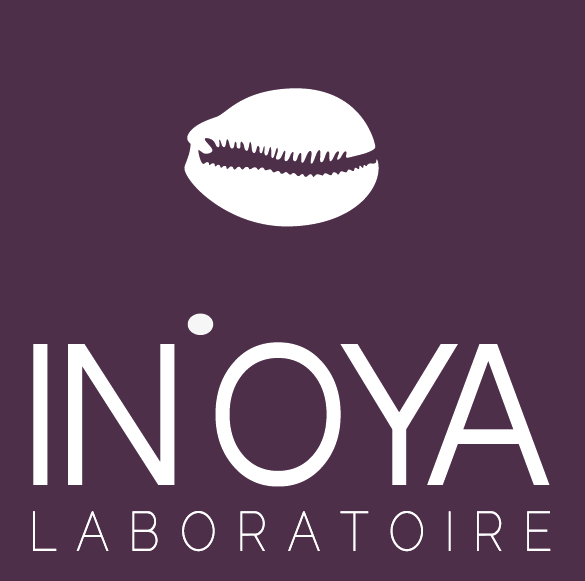Hormonal Acne: Understanding and Effectively Treating It for Black, Brown, and Mixed Skin
Hormonal acne is not just a teenage issue: it affects many adult women and often appears in a more inflammatory and persistent form. On black, brown, and mixed skin, specific characteristics make this condition even more complex: post-inflammatory hyperpigmentation (PIH), risk of keloid scarring, and increased sensitivity to harsh treatments. Understanding these particularities is essential to adopting a safe and effective care strategy.
1. What is Hormonal Acne?
1.1 Definition
Hormonal acne results from fluctuations in androgen hormones, which stimulate sebum production and promote pore blockage. These variations are common at different life stages:
- Before menstruation (luteal phase)
- During pregnancy or postpartum
- In cases of polycystic ovary syndrome (PCOS)
- At menopause (decrease in estrogen)
1.2 How to Recognize It?
Key signs:
- Deep, painful cystic pimples, often inflamed
- Primarily located on the lower face (chin, jawline, neck)
- Cyclic appearance, worsens before menstruation
2. Specific Challenges for Black and Brown Skin with Hormonal Acne
2.1 Increased Tendency for Hyperpigmentation
On phototypes IV to VI, every inflammatory lesion can leave a mark: post-inflammatory hyperpigmentation (PIH). These dark spots, more visible on darker skin, are sometimes harder to fade than the acne itself.
2.2 Risk of Hypertrophic and Keloid Scars
Black and mixed skin heals differently. Skin trauma (picking, popping pimples) can lead to raised and voluminous scars.
2.3 Sensitivity to Harsh Treatments
Highly irritating molecules such as certain retinoids and high-concentration benzoyl peroxide can cause redness, excessive peeling, and worsening of PIH.
3. Common Mistakes to Avoid
- Using harsh products (abrasive scrubs, lightening soaps) that weaken the skin barrier
- Popping or manipulating pimples, increasing the risk of spots and scars
- Using non-prescribed depigmenting treatments (hydroquinone or corticosteroids) that can worsen hyperpigmentation and damage the skin long-term
4. How to Treat Hormonal Acne on Black and Mixed Skin?
4.1 Dermatological Approach
The management of hormonal acne on black and brown skin relies on gentle and tailored solutions:
- Mild keratolytic agents (PHA, low-concentration salicylic acid) to regulate cell turnover and unclog pores with minimal irritation
- Sebum regulators and anti-inflammatories (zinc, niacinamide) to calm inflammation and reduce excess sebum production
- Topical or oral antibiotics: reserved for severe inflammatory flare-ups and prescribed for a limited time to avoid resistance
- Oral contraceptives or anti-androgens: considered when acne is clearly linked to hormonal fluctuations or PCOS
- Daily photoprotection: essential to prevent the appearance or worsening of post-inflammatory marks
4.2 Complementary Skincare
A tailored dermo-cosmetic routine is key to supporting medical treatment and limiting the appearance of new lesions:
- Gentle cleansers: sulfate- and alcohol-free to respect the skin’s hydrolipidic film
- Non-comedogenic moisturizers: to strengthen the skin barrier without clogging pores
- Anti-spot serums (tranexamic acid, niacinamide, stabilized vitamin C) to gradually fade dark marks
- SPF 50 sunscreen: mandatory, even in low sunlight, to avoid hyperpigmentation
4.3 Nutrition and Lifestyle
- Favor a low glycemic index diet rich in antioxidants (fruits, vegetables, omega-3)
- Stay hydrated and limit stimulants (coffee, refined sugar)
- Reduce stress and maintain a regular sleep schedule
5. Focus: Managing Post-Acne Marks on Dark Skin
To reduce PIH, a progressive approach is recommended. The most studied active ingredients for phototypes IV to VI include:
- Azelaic acid
- Tranexamic acid
- Niacinamide
- Stabilized vitamin C
- Gluconolactone (PHA)
These ingredients help even out the complexion without irritating the skin.
Discover our anti-imperfection range for black, brown, and mixed skin.
Conclusion: A Comprehensive and Tailored Approach
Hormonal acne on black and mixed skin requires a customized strategy combining dermatological care, dermo-cosmetics, and lifestyle adjustments. By avoiding aggressive treatments and favoring respectful actives, it is possible to minimize breakouts, prevent marks, and maintain skin integrity.

